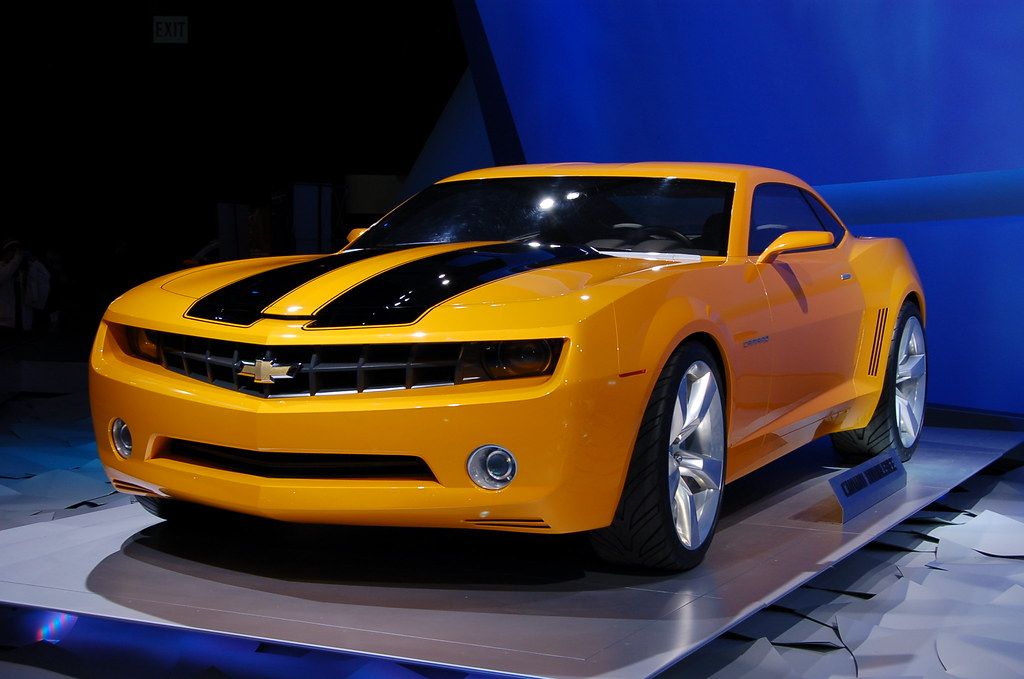
Alright, fellow gearheads and automotive aficionados, let’s be real. There are few feelings in this world quite as soul-crushing as that deep, gnawing sensation of buyer’s remorse, especially when it comes to one of the biggest purchases of your life: a car. You spend countless hours, a substantial chunk of your hard-earned cash, and often sign away years of future payments, only to find yourself staring at a set of keys, wondering, “What have I done?” It’s a universal truth, hitting around 40 percent of new car buyers who regret their purchase, according to a recent survey. That’s nearly four in 10 Americans who’ve bought a car and wished they could hit the rewind button.
We’re not just talking about minor niggles here. We’re talking about those gut-wrenching moments when the dream machine you just financed starts exhibiting behavior that ranges from disappointing to downright dangerous. Whether it’s a car you simply couldn’t afford, a fleeting feeling that you could’ve gotten a better deal, or, more often than not, a vehicle that simply doesn’t live up to the hype, the struggle is undeniably real. The average price of a new car is hovering around $47,000 these days, thanks to inventory shortages and surging demand. That kind of investment demands more than just a shiny exterior; it demands reliability, performance, and a promise that it won’t leave you stranded or, worse, underwater on your loan, as a third of Americans already are.
So, what if we told you there’s a way to skip the pain, to learn from the battle-hardened veterans of the asphalt who’ve already navigated the treacherous waters of automotive disappointment? We’ve got the inside scoop on the vehicles that have caused the most heartache, the ones that owners, given a do-over, would gladly “unchoose.” These aren’t just statistics; these are cautionary tales from the front lines of car ownership, direct from the folks who’ve paid their dues (and then some). Let’s dive deep into the first seven machines that earned a spot on this unenviable list, peeling back the layers of regret one problematic model at a time.
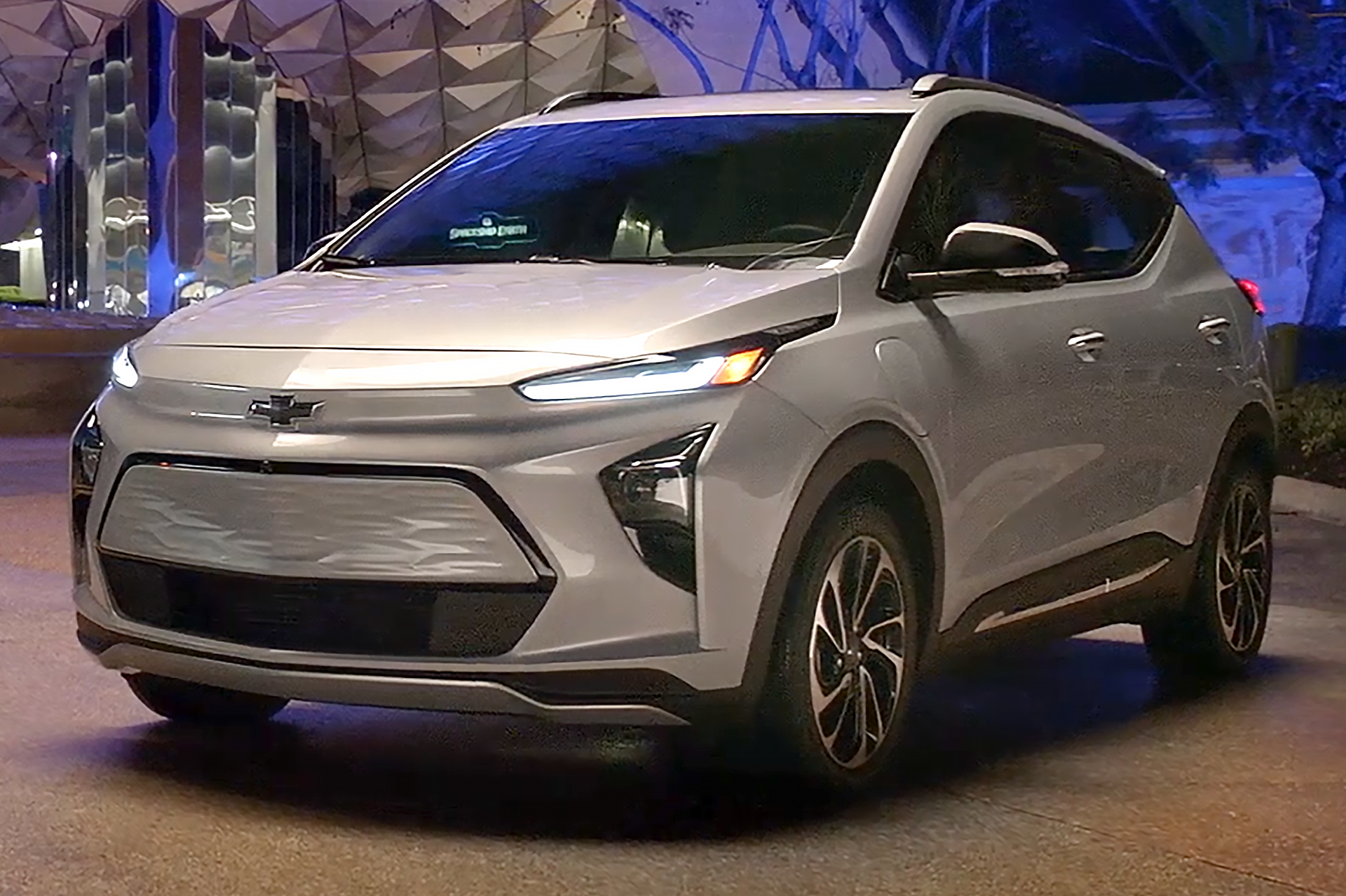
1. **Chevrolet Bolt** Ah, the Chevrolet Bolt. On paper, it sounded like a winner, didn’t it? General Motors’ electric offering garnered praise for its affordability, a crucial selling point in the burgeoning EV market, and a respectable range that promised to alleviate range anxiety for many. It looked like a viable, economical entry into the electric future.
However, the road to electric glory for the Bolt was, unfortunately, paved with fiery setbacks. The most infamous issue, and one that cast a dark shadow over its reputation, was a series of battery-related fires. This led to massive, brand-damaging recalls in both 2020 and 2021, forcing GM to address a critical flaw at the very core of the vehicle’s propulsion system.
The root of the problem, it turned out, lay with the lithium-ion batteries supplied by LG, which had a nasty habit of short-circuiting, overheating, and, in worst-case scenarios, igniting into flames. Beyond the very serious fire hazard, owners also reported that the Bolt’s ride quality was merely “so-so,” rear passenger space left much to be desired, and its handling was far from inspiring. For a vehicle meant to usher in a new era of driving, these foundational compromises, coupled with critical safety concerns, quickly turned initial enthusiasm into profound buyer’s remorse.
Car Model Information: 2019 Chevrolet Bolt EV LT
Name: Chevrolet Bolt EV
Caption: 2022 Chevrolet Bolt EV
Manufacturer: General Motors
Production: unbulleted list
ModelYears: unbulleted list
Class: Subcompact car
BodyStyle: hatchback
Layout: Front-engine, front-wheel-drive layout
Predecessor: Chevrolet Spark EV
Categories: 2020s cars, All Wikipedia articles in need of updating, All articles containing potentially dated statements, All articles with unsourced statements, Articles containing potentially dated statements from February 2018
Summary: The Chevrolet Bolt EV (marketed in Europe as Opel Ampera-e) is a battery electric subcompact hatchback manufactured and marketed by General Motors under its Chevrolet brand from late 2016 until late 2023, with a brief hiatus between mid-2021 and early 2022.
The first-generation Bolt was developed and manufactured with LG Corporation. Sales of the 2017 Bolt began in California in December 2016; it was released nationwide and international markets release in 2017. A rebadged European variant was marketed as the Opel Ampera-e in mainland Europe. In 2017, the Bolt was the second-best-selling plug-in car in the United States. It was named the 2017 Motor Trend Car of the Year, the 2017 North American Car of the Year, an Automobile magazine 2017 All Star, and was listed in Time magazine’s Best 25 Inventions of 2016. The Ampera-e was discontinued after 2018. By the end of 2020, GM had sold 112,000 Bolt and Ampera-e cars worldwide. The first-generation Bolt had been subject to at least three recalls due to battery fire risks.
In mid-2023, GM officials said they would discontinue the Bolt; after outcry, they announced plans for a next-generation model, which is expected to be revealed in 2025 for model year 2026.
Get more information about: Chevrolet Bolt
Buying a high-performing used car >>>
Brand: Chevrolet Model: Bolt
Price: $12,999 Mileage: 64,980 mi.
Read more about: 12 Cars That Made Drivers Say ‘Nope, Not Again!’ – Your Ultimate Guide to Avoiding Instant Regret on Wheels
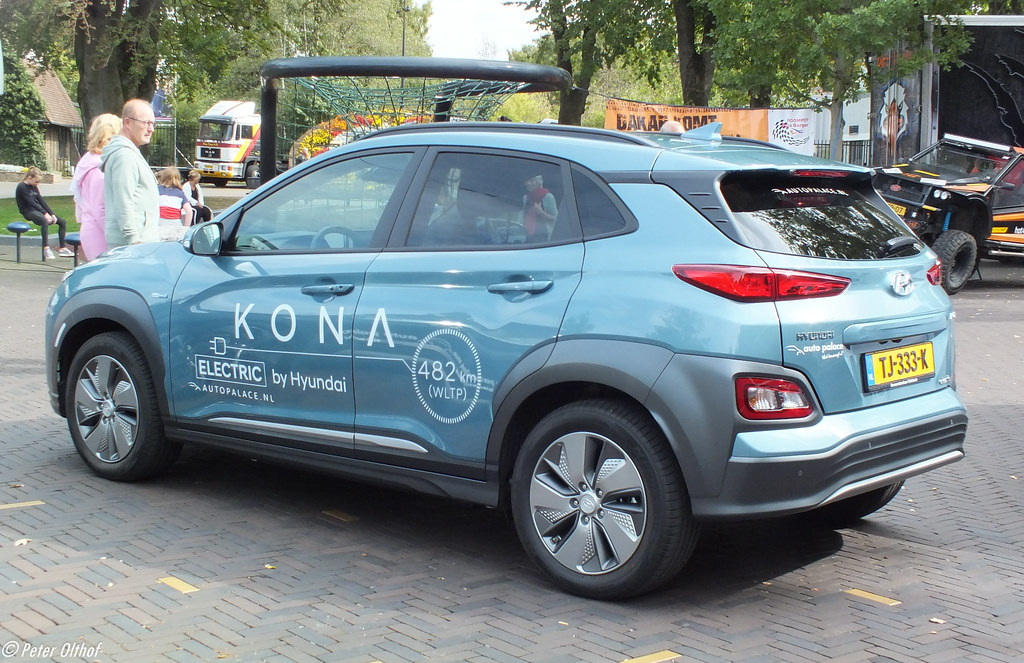
2. **Hyundai Kona Electric** Hyundai has, to its credit, been on a bit of a roll in the EV space, churning out some genuinely interesting and well-received electric vehicles that have captured the public’s imagination. But even the best streaks can have their missteps, and the Hyundai Kona Electric stands as a prime example of an otherwise forward-thinking brand having a significant “clunker” in its lineup.
Much like its Chevrolet counterpart, the Kona Electric found itself entangled in a web of battery fires and subsequent recalls. Hyundai was compelled to issue a worldwide recall in 2020 and 2021, attempting to “nip the fire risks in the bud” by undertaking the substantial task of replacing battery packs in affected EVs globally. It was a clear admission of a serious, systemic flaw that no owner wants to discover in their new, expensive purchase.
Yet, for many owners, the battery issues were just “the tip of the iceberg.” This phrasing from the original context is particularly damning, suggesting a deeper well of problems lurking beneath the surface. While the exact additional woes aren’t detailed, the implication is clear: those who bought the Kona Electric faced a multitude of frustrations beyond the well-publicized fire risk. It served as a stark reminder that sometimes, even a brand with a strong track record can stumble, leaving its early adopters with a bitter taste of regret and a cautionary tale for future buyers.
Car Model Information: 2025 Volkswagen Atlas 2.0T SEL Premium R-Line 4MOTION
Name: Hyundai Kona
Caption: Hyundai Kona N Line (SX2)
Manufacturer: Hyundai Motor Company
Aka: Hyundai Kauai (Portugal)
Production: 2017–present
ModelYears: 2018–present
Class: Subcompact crossover SUV
BodyStyle: SUV
Layout: ubl
Categories: 2020s cars, All-wheel-drive vehicles, All Wikipedia articles in need of updating, Articles containing Chinese-language text, Articles containing Korean-language text
Summary: The Hyundai Kona (Korean: 현대 코나) is a subcompact crossover SUV produced by the South Korean manufacturer Hyundai. The first-generation Kona debuted in June 2017 and the production version was revealed later that year. It is positioned between the Venue or Bayon and the Tucson in Hyundai crossover SUV line-up. The battery electric version called the Kona Electric (or Kona EV) was first launched in South Korea during the first half of 2018 and rolled out gradually worldwide afterwards.
Get more information about: Hyundai Kona
Buying a high-performing used car >>>
Brand: Hyundai Model: Kona Electric
Price: $45,893 Mileage: 10,150 mi.
Read more about: 12 Cars That Made Drivers Say ‘Nope, Not Again!’ – Your Ultimate Guide to Avoiding Instant Regret on Wheels
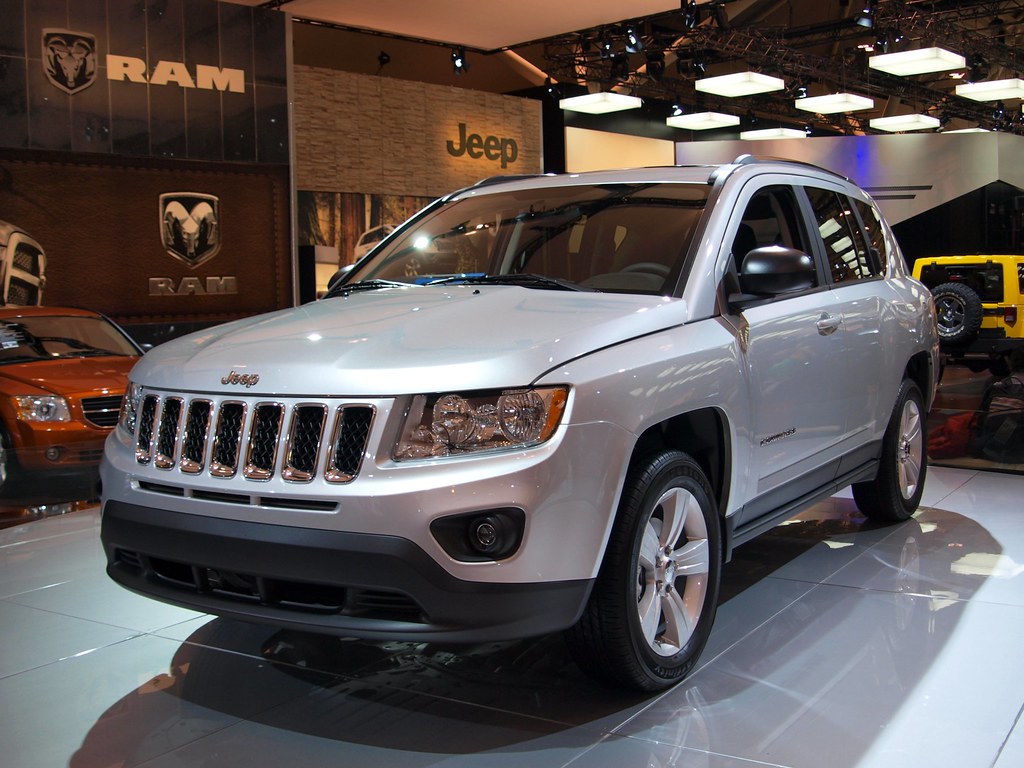
3. **Jeep Compass** The Jeep Compass, a compact SUV ostensibly designed for both urban jaunts and light off-road adventures, has unfortunately earned a reputation for being less of a compass guiding you smoothly through life and more of a compass spinning wildly out of control. Across various model years, this vehicle has presented owners with a litany of “serious issues,” making it a strong contender for a vehicle to “steer clear of” if you want to avoid a “migraine headache on wheels.”
One of the most frequently cited complaints from disgruntled owners revolves around its transmission systems. Both the continuously variable transmission (CVT) and the 9-speed automatic transmissions are notorious for experiencing “herky-jerky shifting” and, in far too many cases, outright “catastrophic failure.” Imagine the frustration of navigating traffic or cruising down the highway, only for your SUV to feel like it’s having an internal argument about which gear to be in.
But the transmission woes are just part of the story. The Compass also suffers from “poor engine performance,” which, when combined with excessive “oil consumption,” paints a picture of an engine that’s both underpowered and thirsty for expensive fluids. Add to that persistent “electrical system issues,” and you have a recipe for a vehicle that spends more time in the shop than on the road, undoubtedly sparking profound buyer’s remorse among its owners.
Car Model Information: 2017 Jeep Wrangler Unlimited Sport
Name: Jeep Compass
Caption: 2019 Jeep Compass
Manufacturer: Jeep
Production: 2006–present
ModelYears: 2007–present
Class: Compact crossover SUV
BodyStyle: SUV
Layout: Front-engine, front-wheel-drive layout
Chassis: Unibody
Categories: 2010s cars, 2020s cars, All-wheel-drive vehicles, All Wikipedia articles written in American English, Articles with short description
Summary: The Jeep Compass is a compact crossover SUV, introduced in 2006 for the 2007 model year. The first generation Compass and Patriot, its rebadged variant, were among Jeep’s first crossover SUVs. The second-generation Compass debuted in September 2016 in Brazil and at the Los Angeles International Auto Show in November 2016, sharing a modified platform with the Renegade. It is positioned between the smaller Renegade and the larger Cherokee globally or the Commander in South America. The third-generation Compass debuted in May 2025, built on the STLA Medium by Stellantis, shared with other PSA Groupe vehicles.
Get more information about: Jeep Compass
Buying a high-performing used car >>>
Brand: Jeep Model: Compass
Price: $20,725 Mileage: 111,103 mi.
Read more about: 12 Cars That Made Drivers Say ‘Nope, Not Again!’ – Your Ultimate Guide to Avoiding Instant Regret on Wheels
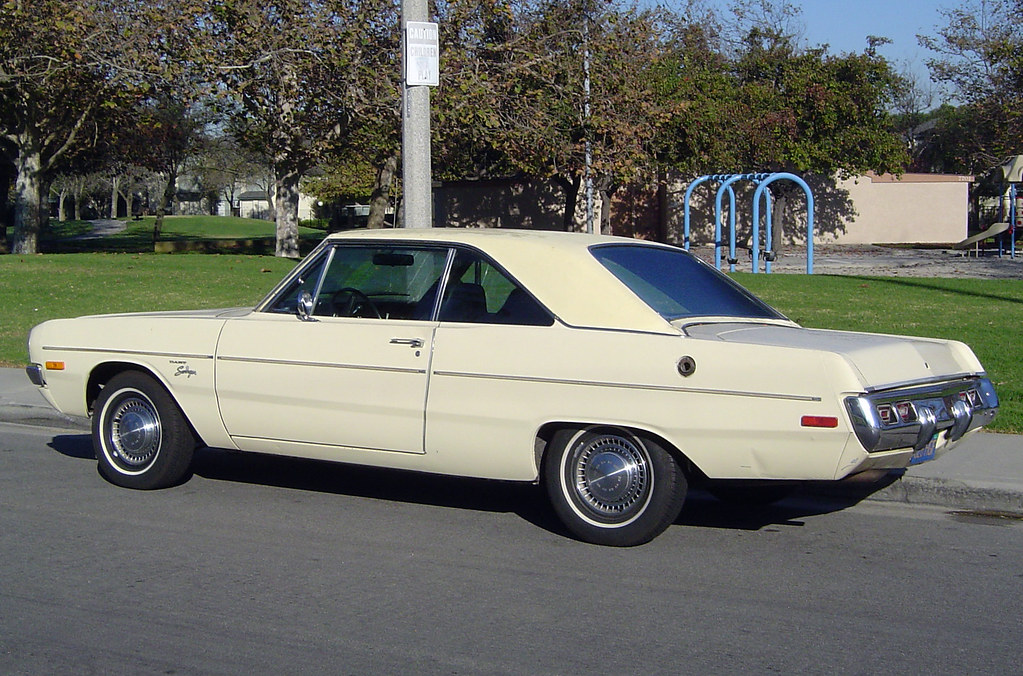
4. **Dodge Dart** The Dodge Dart, a compact sedan that promised a blend of European styling and American sensibility, quickly became known for packing “full-size car problems” into its smaller frame. It’s a car that, for many, was a bridge too far, a symbol of broken promises and persistent mechanical headaches.
Owners frequently lament its across-the-board reliability issues. Where do you even begin with the Dart? From its notoriously troubled “transmission to the engine,” and from its “suspension to the brakes,” virtually no major system seemed immune to problems. This widespread unreliability meant that owners weren’t just dealing with a single Achilles’ heel; they were contending with a whole host of weaknesses that made daily driving a gamble.
The sentiment among those who bought a Dart is clear and overwhelmingly negative. According to insights gathered from Consumer Reports, a sobering “around six in 10 buyers say they are not satisfied with the vehicle.” That’s a staggering majority who, if given the chance, would gladly reverse their purchase. It’s a stark indicator that sometimes, a car can look the part but utterly fail to deliver on the fundamental promise of dependable transportation.
Car Model Information: 1972 Dodge Dart Swinger
Name: Dodge Dart
Caption: 1966 Dodge Dart GT 2-door hardtop
Manufacturer: Dodge
Production: 1959–1976 (US market)
ModelYears: 1960–1976 (US market)
Class: Full-size
Layout: FR layout
Predecessor: Dodge Coronet#Fourth generation (1957–1959)
Related: Plymouth Valiant,Chrysler Valiant,Dodge Phoenix
Successor: Dodge Aspen,Dodge Diplomat,Talbot Tagora
Categories: 1970s cars, All articles with unsourced statements, Articles with short description, Articles with unsourced statements from December 2023, Articles with unsourced statements from May 2025
Summary: The Dodge Dart is a line of passenger cars produced by Dodge from the 1959 to 1976 model years in North America, with production extended to later years in various other markets.
The production Dodge Dart was introduced as a lower-priced full-size model in 1960 and 1961, but became a mid-size car for one model year for 1962, and was then reduced to a compact for two generations, from 1963 to 1976.
Chrysler had first used ‘Dart’ name plates on two Italian styled show cars, in 1956 and 1957, before it became a Dodge model name. The Dart nameplate was resurrected for a Fiat-derived compact car that was introduced in 2012.
Get more information about: Dodge Dart
Buying a high-performing used car >>>
Brand: Dodge Model: Dart
Price: $18,250 Mileage: 40,424 mi.
Read more about: 12 Cars That Made Drivers Say ‘Nope, Not Again!’ – Your Ultimate Guide to Avoiding Instant Regret on Wheels

5. **Dodge Grand Caravan** For many families, the Dodge Grand Caravan has long been an institution, a minivan that has ferried generations to soccer practice, cross-country vacations, and countless errands. It’s the kind of vehicle that evokes memories, some fond, some perhaps less so. However, beneath that veneer of family utility, many owners would tell you that these minivans were “anything but smooth driving.”
The Achilles’ heel of the Grand Caravan, and a common source of significant distress, was its transmission. “Transmission failure is a common complaint from owners,” casting a long shadow over its reliability as a family hauler. Before these transmissions ultimately went “kaput,” they frequently exhibited a range of alarming symptoms, including “delayed gear engagement,” “rough shifting,” and a disconcerting tendency towards “slipping.” Imagine trying to merge onto a busy highway with a minivan full of kids, only for the transmission to hesitate or jerk unexpectedly – a recipe for anxiety, if not outright danger.
Beyond the critical transmission issues, many owners also grappled with pervasive “electrical system problems” and frustratingly “heavy oil consumption.” These weren’t minor inconveniences; they were persistent, often expensive, defects that eroded confidence in the vehicle. It’s no wonder that a chorus of owners, if they “could rewind time and have a do-over,” would “gladly choose something else,” fundamentally regretting their decision to entrust their family’s transportation to this particular minivan.
Car Model Information: 2020 Audi Q5 45 Premium
Caption: 2011 Dodge Grand Caravan Mainstreet
Name: Dodge Grand Caravan
Manufacturer: Chrysler Corporation,Daimler AG,Chrysler LLC,Chrysler Group LLC,FCA US LLC
Class: Minivan
Layout: FF layout,F4 layout
Production: November 2, 1983 –August 21, 2020
ModelYears: 1984–2020
Related: Plymouth Voyager,Chrysler Town & Country (minivan),Dodge Mini Ram,Chrysler Voyager,Volkswagen Routan
Assembly: Windsor, Ontario,Fenton, Missouri,Fenton, Missouri,Fuzhou
Successor: Dodge Journey,Chrysler Voyager
Categories: All-wheel-drive vehicles, All articles with unsourced statements, Articles with short description, Articles with unsourced statements from December 2017, Articles with unsourced statements from May 2009
Summary: The Dodge Caravan is a series of minivans manufactured by Chrysler from the 1984 through 2020 model years. The Dodge version of the Chrysler minivans, was marketed as both a passenger van and a cargo van (the only version of the model line offered in the latter configuration). For 1987, the model line was joined by the long-wheelbase Dodge Grand Caravan. Produced in five generations across 36 model years, the Dodge Caravan is the second longest-lived Dodge nameplate (exceeded only by the Dodge Charger). Initially marketed as the Dodge counterpart of the Plymouth Voyager, the Caravan was later slotted between the Voyager and the Chrysler Town & Country. Following the demise of Plymouth, the model line became the lowest-price Chrysler minivan, ultimately slotted below the Chrysler Pacifica.
Sold primarily in the United States and Canada, the Dodge Caravan was also marketed in Europe and other international markets under the Chrysler brand (as the Chrysler Voyager or Chrysler Caravan). From 2008 onward, Dodge marketed the model line only as the Grand Caravan; Ram Trucks sold a cargo-only version of the model line as the Ram C/V Tradesman. The model line was also rebranded as the Volkswagen Routan from 2009 through 2014.
After the 2020 model year, the Dodge Grand Caravan was discontinued, ending production on August 21, 2020. For 2021 production, the Grand Caravan nameplate was moved to Chrysler, which used it for a Canadian-market version of the Chrysler Pacifica (in the United States, the exact vehicle was marketed as the Chrysler Voyager).
For its entire production run, the Dodge Caravan/Grand Caravan was manufactured by Chrysler Canada (now Stellantis Canada) at its Windsor Assembly facility (Windsor, Ontario). From 1987 until 2007, the model line was also manufactured by Chrysler at its Saint Louis Assembly facility (Fenton, Missouri). Since their introduction in late 1983, over 14.6 million Chrysler minivans have been sold worldwide (including export versions and versions sold through rebranding).
Get more information about: Dodge Caravan
Buying a high-performing used car >>>
Brand: Dodge Model: Grand Caravan
Price: $20,955 Mileage: 51,510 mi.
Read more about: 12 Cars That Made Drivers Say ‘Nope, Not Again!’ – Your Ultimate Guide to Avoiding Instant Regret on Wheels

6. **Nissan Sentra** The Nissan Sentra, a long-standing fixture in the compact sedan segment, presents a mixed bag. While some model years were perfectly acceptable – as is “the case with most vehicles” – a specific era stands out as truly “horrific.” If you’re in the market for a used Sentra, heed this warning: “Stay away from the ones made from 2013 to 2019.”
The primary culprit behind this span of woe is, yet again, Nissan’s infamous continuously variable transmission (CVT). This particular iteration of the CVT proved to be a “thorn in the side of many Sentra owners,” leading to a litany of complaints that transformed daily commutes into nerve-wracking experiences. Owners frequently reported “overheating” issues, “jerky acceleration” that undermined any sense of smooth driving, and a persistent “shuddering” that made the car feel like it was constantly on the verge of breakdown.
But the CVT wasn’t the Sentra’s only failing during these years. The “laundry list of issues” also included frustrating instances of “engine stalling,” a severe reliability concern that can be outright dangerous. Furthermore, the vehicle was plagued by “many recalls related to the vehicle’s airbags, seatbelts, brakes, and more,” painting a picture of a car with fundamental design and manufacturing flaws across multiple critical systems. For those who bought into the 2013-2019 models, the buyer’s remorse was not just real; it was a deeply ingrained, everyday frustration.
Car Model Information: 2018 Nissan Sentra SV
Name: Nissan Sentra
Caption: 2021 Nissan Sentra SR (B18; Canada)
Manufacturer: Nissan
Aka: Nissan Sunny
Production: 1982–present
Class: Subcompact car
Predecessor: Nissan Sunny#B310
Categories: 1990s cars, 2000s cars, 2010s cars, 2020s cars, All Wikipedia articles written in American English
Summary: The Nissan Sentra is a series of automobiles manufactured by the Japanese automaker Nissan since 1982. Since 1999, the Sentra has been categorized as a compact car, while previously it occupied the subcompact class. Until 2006, Sentra was a rebadged export version of the Japanese Nissan Sunny, but since the 2013 model year, Sentra is a rebadged export version of the Sylphy. The Sentra nameplate is not used in Japan. Many other countries in Latin America sell their versions of the Sunny as the Sentra. In Mexico, the first three generations of the Sentra were known as the Nissan Tsuru (Japanese for crane), and the B13 model was sold under that name until 2017, alongside the updated models badged as Sentra.
In North America, the Sentra currently serves as Nissan’s compact car, despite being rated as a mid-size car by the EPA due to its interior volume since the 2007 model year. While previous Sentras were subcompacts, the Sentra has grown over the years, with the Nissan Versa having replaced the Sentra in the entry-level area.
The Sentra name was created for Nissan by Ira Bachrach of NameLab, and Bachrach describes the origin as “Nissan wanted consumers to understand that it was quite safe even though it was small. The word Sentra sounds like central as well as sentry, which evokes images of safety.”
Get more information about: Nissan Sentra
Buying a high-performing used car >>>
Brand: Nissan Model: Sentra
Price: $9,987 Mileage: 73,999 mi.
Read more about: 12 Cars That Made Drivers Say ‘Nope, Not Again!’ – Your Ultimate Guide to Avoiding Instant Regret on Wheels
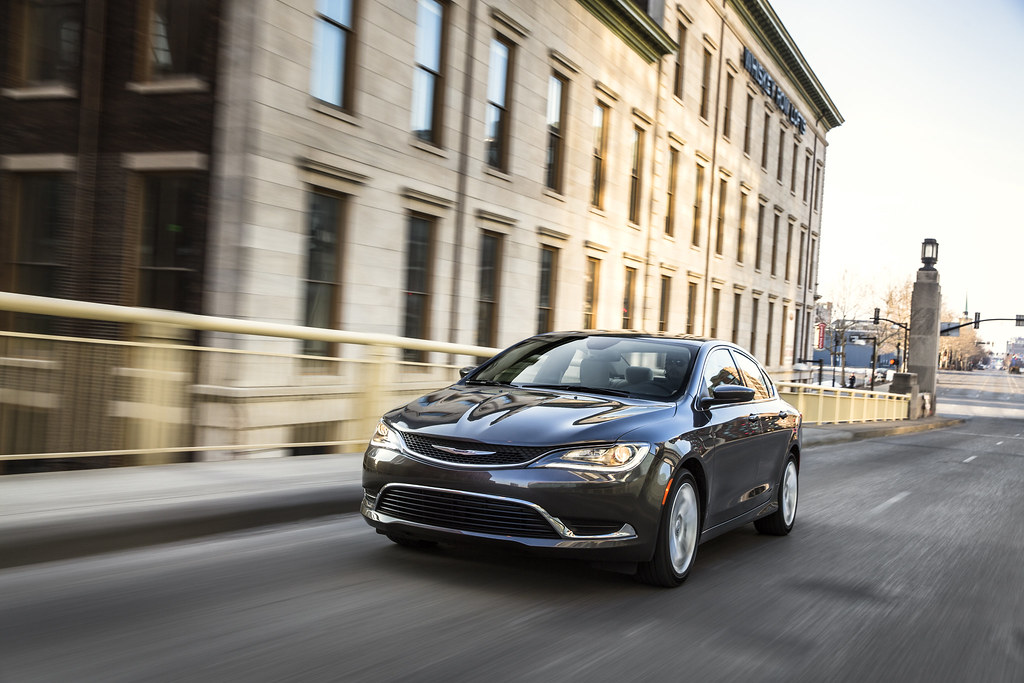
7. **Chrysler 200** The Chrysler 200, manufactured between 2011 and 2017, was Chrysler’s attempt to offer a competitive mid-size sedan, but it largely fell short, garnering a reputation for widespread “reliability issues.” While its styling aimed for sophistication, the underlying mechanical realities proved to be a consistent source of frustration for its owners, driving many to regret their purchase.
A significant and recurring problem, especially highlighted by owners of the 2015, 2016, and 2017 models, centered squarely on its “9-speed automatic tranny.” This transmission was found to be “especially problematic,” exhibiting inconsistent and often unpredictable behavior that severely compromised the driving experience. For many, this was just “for starters,” as the issues frequently escalated to complete “transmission failure,” leading to costly repairs and extended periods of downtime.
Beyond the transmission’s temperamental nature, the Chrysler 200 also suffered from pervasive “engine performance problems.” Whether it was a lack of power, rough idling, or other persistent issues, the heart of the car often failed to inspire confidence or provide reliable motivation. These combined mechanical ailments meant that the Chrysler 200 often left its owners with buyer’s remorse, struggling with a vehicle that, despite its relatively modern appearance, was plagued by fundamental reliability shortcomings that made it a difficult car to live with. It’s a classic example of a car that just couldn’t deliver on the essential promise of dependable transportation.
Alright, gearheads, if you thought the first seven tales of automotive woe were a gut punch, buckle up, because we’re not done dissecting the long road of regret. We’ve peeled back the initial layers of disappointment, but now we’re diving deeper into those persistent flaws and the sheer, grinding frustration that truly defines buyer’s remorse. These are the machines that didn’t just stumble; they flat-out failed to deliver, leaving owners wishing they had a time machine and a different set of keys.
Let’s continue our unenviable journey through automotive history, shedding light on eight more vehicles that, according to their drivers, should come with a mandatory warning label. This isn’t just about a bad deal; it’s about the soul-crushing realization that you’re stuck with a problem on wheels.
Car Model Information: 2015 Chrysler 200 S
Name: Chrysler 200
Manufacturer: Chrysler
Production: 2010–2016
ModelYears: 2011–2017
Assembly: Sterling Heights, Michigan
Class: Mid-size car
Sp: us
Predecessor: Chrysler Sebring
Categories: 2010s cars, All articles with dead external links, All articles with unsourced statements, Articles with dead external links from July 2020, Articles with permanently dead external links
Summary: The Chrysler 200 is a mid-size sedan that was manufactured and marketed by Chrysler from model years 2011 to 2017 across two generations in four-door sedan and two-door convertible (first generation only) body styles.
The 200 nameplate debuted on the 200C, a prototype hybrid vehicle shown at the 2009 North American International Auto Show in Detroit and based on the Chrysler 300. The 200C concept was engineered to accept either traditional gasoline, hybrid or full-electric powertrains.
Get more information about: Chrysler 200
Buying a high-performing used car >>>
Brand: Chrysler Model: 200
Price: $7,200 Mileage: 122,275 mi.
Read more about: 12 Cars That Made Drivers Say ‘Nope, Not Again!’ – Your Ultimate Guide to Avoiding Instant Regret on Wheels
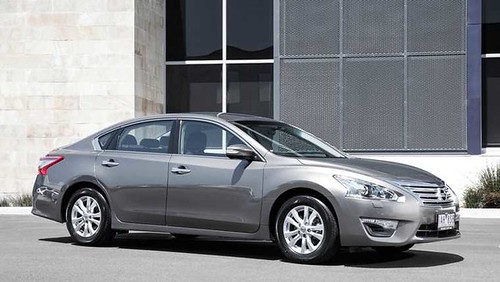
8. **Nissan Altima** And here we are again, staring down another Nissan, specifically the Altima. Much like its Sentra sibling, this sedan has carved out a reputation, not for thrilling drives or bulletproof reliability, but for its rather infamous and incredibly problematic continuously variable transmission, or CVT. Owners from the 2013 to 2019 model years especially found themselves grappling with a gearbox that simply refused to cooperate, transforming daily commutes into exercises in patience and frustration.
The CVT in these Altimas wasn’t just a minor inconvenience; it was a consistent source of grief, contributing to a driving experience that was anything but smooth or predictable. But the transmission, as exasperating as it was, wasn’t the sole antagonist in this automotive drama. Owners also reported significant issues with the steering, which, when combined with a temperamental transmission, makes for an unsettling ride that erodes driver confidence.
Adding insult to injury, many Altima owners battled with excessive oil consumption and oil leaks. This isn’t just about a thirsty engine; it’s about a persistent, messy problem that leads to frequent top-offs and the ever-present anxiety of a potential engine catastrophe. For a car marketed as a dependable mid-size sedan, these accumulated flaws turned the Altima into a textbook case of buyer’s remorse, where the dream of reliable transportation evaporated into a haze of mechanical issues and mounting repair bills.
Car Model Information: 2015 Nissan Altima 2.5 S
Name: Nissan Altima
Caption: 2024 Nissan Altima SR (L34; US)
Manufacturer: Nissan
Aka: Nissan Bluebird
Production: 1992–present
Class: Compact car
Predecessor: Nissan Bluebird,Nissan Stanza
ModelYears: 1993–present
Categories: 2000s cars, 2010s cars, 2020s cars, All-wheel-drive vehicles, All Wikipedia articles written in American English
Summary: The Nissan Altima is a mid-size car manufactured by Nissan since 1992. It is a continuation of the Nissan Bluebird line, which began in 1955.
The Altima has historically been larger, more powerful, and more luxurious than the Nissan Sentra but less so than the Nissan Maxima. The first through fourth-generation cars were manufactured exclusively in the United States and officially sold in North and South America, along with the Middle East and Australia. For other markets, Nissan sold a related mid-size sedan called the Nissan Teana which was between the Altima and Maxima in terms of size. In 2013, the Teana became a rebadged version of the fifth-generation Altima.
The name “Altima” was originally applied to a top trim line of the Nissan Leopard for the Japanese market in 1986, and then to the Nissan Laurel Altima mid-size car sold in Central America and the Caribbean before 1992. In 1992, Nissan discontinued the Stanza which was a Nissan Bluebird clone, replacing it with the US-built Altima, while remaining a compact car. The first Altima was produced in June 1992, as a 1993 model. All Altima models for the North American market were built in Smyrna, Tennessee, until June 2004, when Nissan’s Canton, Mississippi plant also began producing the model to meet high demand.
Get more information about: Nissan Altima
Buying a high-performing used car >>>
Brand: Nissan Model: Altima
Price: $8,235 Mileage: 117,517 mi.
Read more about: 12 Cars That Made Drivers Say ‘Nope, Not Again!’ – Your Ultimate Guide to Avoiding Instant Regret on Wheels
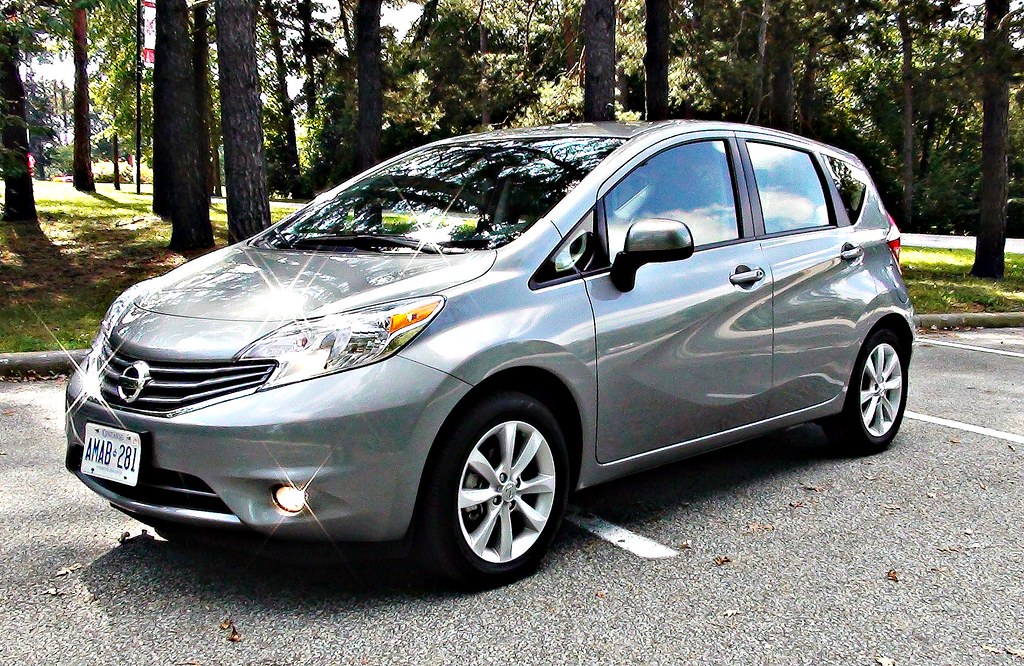
9. **Nissan Versa Note** If the Nissan Altima was a disappointment, the Nissan Versa Note often felt like a foregone conclusion of regret, a vehicle where the promise of affordability came at too steep a price in terms of quality and driving experience. Touted as a super-cheap small hatchback, it delivered on the ‘cheap’ part, perhaps a little too literally, leading to an undeniable sense of buyer’s remorse for many who signed on the dotted line.
The primary culprit, yet again, was Nissan’s continuously variable transmission. For Versa Note owners, this particular CVT was a relentless source of frustration, manifesting in sluggish response and an overall uninspiring drive. When the transmission is constantly battling itself, the entire car feels compromised, and that budget-friendly purchase quickly starts to feel like a very expensive mistake.
To compound the transmission woes, the Versa Note’s 1.6-liter 4-cylinder engine was frequently described as delivering “anemic acceleration.” Imagine merging onto a highway or trying to pass on a two-lane road, only to find your car struggling, sounding like it’s giving its all but delivering very little. This combination of a problematic transmission and a weak engine made for a driving experience that wasn’t just disappointing; it was often genuinely nerve-wracking, proving that sometimes, a low sticker price merely disguises a deeper well of compromises.
Car Model Information: 2020 Audi Q5 45 Premium
Categories: All set index articles, Articles with short description, CS1 Mexican Spanish-language sources (es-mx), CS1 Portuguese-language sources (pt), CS1 Spanish-language sources (es)
Summary: Nissan Versa is an automobile nameplate used by the Japanese manufacturer Nissan in the Americas for the following models:
According to a Nissan press release in 2008, “versa” is short for “versatile space” meant to imply the spaciousness of the interior and configurable cargo arrangements. The Versa is one of the few remaining subcompact cars left on sale in the North American market, with most automakers dropping small cars from their lineups to focus on crossovers and SUVs.
Get more information about: Nissan Versa
Buying a high-performing used car >>>
Brand: Nissan Model: Versa Note
Price: $20,955 Mileage: 51,510 mi.
Read more about: 12 Cars That Made Drivers Say ‘Nope, Not Again!’ – Your Ultimate Guide to Avoiding Instant Regret on Wheels
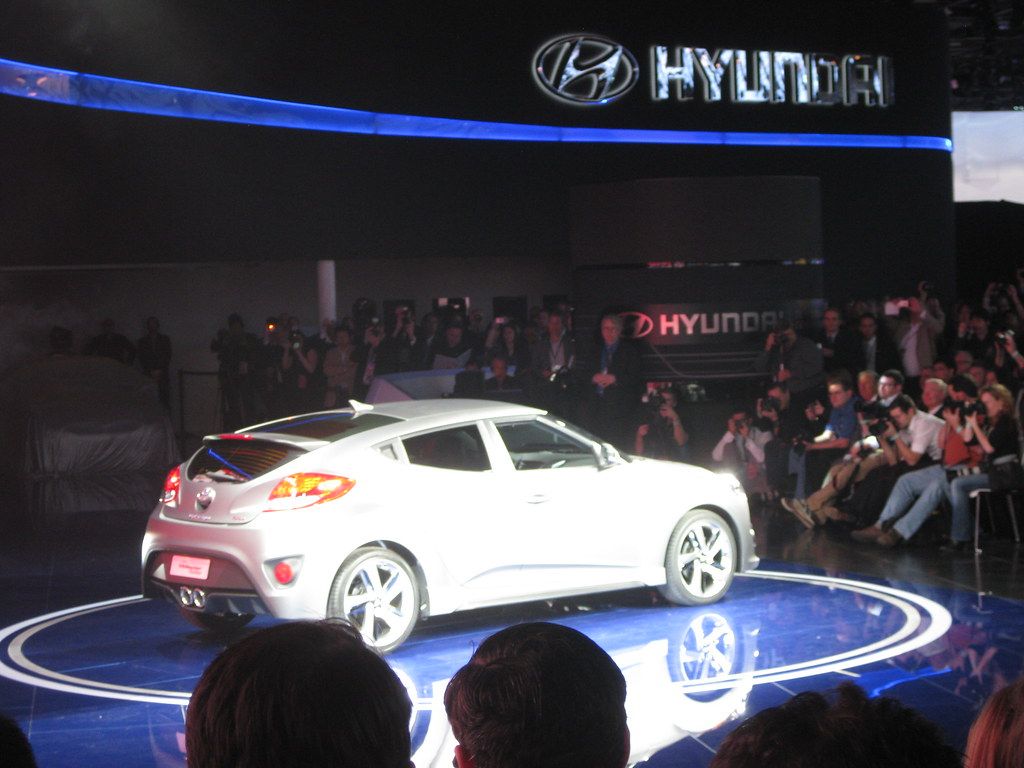
10. **Hyundai Veloster** The Hyundai Veloster, with its undeniably cool looks, distinctive three-door styling, and the promise of responsive handling, initially captured the imagination of many drivers looking for something a bit different. On the surface, it seemed like a fresh, sporty take on a compact car, offering a dash of flair that set it apart from its more mundane rivals. Yet, beneath that unique exterior, a litany of problems emerged that owners found increasingly hard to ignore, turning initial excitement into deep regret.
Perhaps the most alarming issue plaguing the Veloster was its engine, with many reports of problems that could lead to nothing less than “catastrophic failure.” This isn’t just a check engine light; it’s the kind of fundamental flaw that can completely sideline a vehicle, leading to prohibitively expensive repairs or even a total write-off. The thought of your engine seizing up is enough to give any car owner nightmares, and for Veloster owners, it was a very real concern.
Beyond the critical engine issues, the Veloster’s dual-clutch transmission also proved to be a significant headache. Owners frequently encountered frustrating symptoms like “delayed acceleration,” a disconcerting tendency for “slipping,” and notoriously “jerky shifts.” These aren’t just minor irritations; they undermine the very responsiveness the car was supposed to offer, making for an unpredictable and deeply unsatisfying driving experience, especially in a vehicle that positions itself as sporty.
As if those weren’t enough to sour the ownership experience, the Hyundai Veloster also suffered from persistent suspension and steering problems. So, what started as a stylish, potentially fun-to-drive car often devolved into a mechanical nightmare, demanding constant attention and draining bank accounts. The Veloster stands as a stark reminder that unique styling and initial appeal can quickly be overshadowed when fundamental reliability and driving dynamics are compromised, leaving owners to wonder why they ever fell for its charms.
Car Model Information: 2012 Hyundai Veloster Base
Name: Hyundai Veloster
Manufacturer: Hyundai Motor Company
Production: 2011–2022
Class: Sport compact car
Layout: Front-engine, front-wheel-drive layout
BodyStyle: hatchback
Predecessor: Hyundai Tiburon
ModelYears: 2012–2022
Assembly: Ulsan
Categories: All Wikipedia articles in need of updating, All articles with unsourced statements, Articles containing Korean-language text, Articles with short description, Articles with unsourced statements from May 2018
Summary: The Hyundai Veloster (Korean: 현대 벨로스터, romanized: Hyeondae Belloseuteo) is a compact car first produced in 2011 by Hyundai, with sales beginning in South Korea on March 10, 2011, and in Canada and the United States since the fall of 2011. In South Korea, it was marketed under Hyundai’s ‘Premium Youth Lab’. It was unveiled on January 10, 2011, at the Detroit Auto Show, and fills the void left when Hyundai discontinued the Hyundai Tiburon after the 2008 model year.
The car differs from most other hatchbacks with its asymmetrical door configuration, featuring one large door on the driver side and two smaller doors on the passenger side. This configuration is more common on commercial vehicles and minivans.
Get more information about: Hyundai Veloster
Buying a high-performing used car >>>
Brand: Hyundai Model: Veloster
Price: $7,950 Mileage: 83,462 mi.
Read more about: 12 Cars That Made Drivers Say ‘Nope, Not Again!’ – Your Ultimate Guide to Avoiding Instant Regret on Wheels
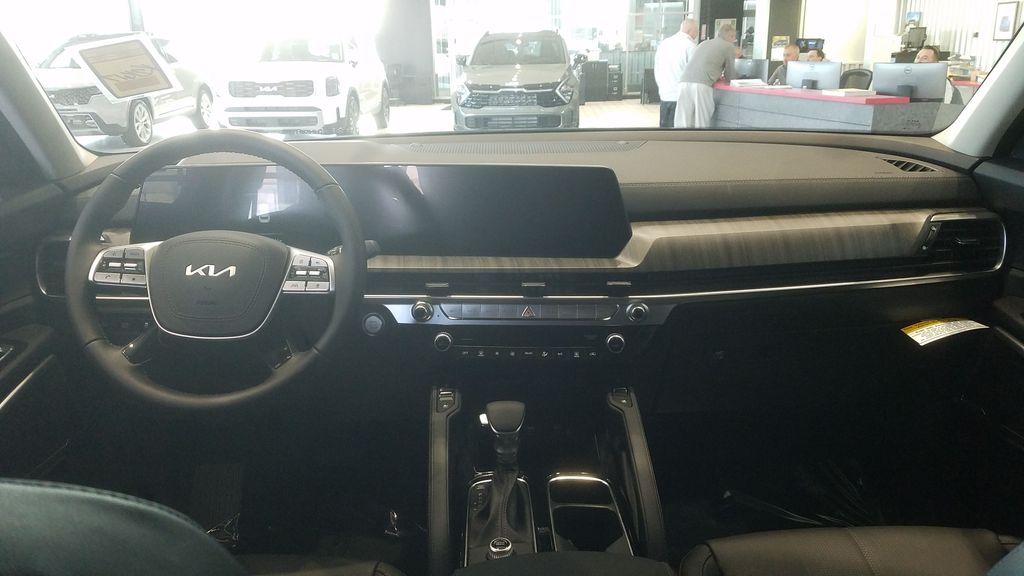
11. **Kia Rio** For those who ventured into ownership of the Kia Rio, a good many found themselves grappling with “their fair share of buyer’s remorse,” a feeling that often crept in despite the vehicle’s initial allure of affordability and efficiency. On paper, the Rio promised sensible, economical transportation, a budget-friendly option for those simply needing to get from point A to point B without breaking the bank. Unfortunately, the reality for many owners diverged sharply from this promise, proving that sometimes, you truly do get what you pay for.
The primary source of contention for Rio owners lay squarely with its engine issues. Complaints frequently revolved around “rough idling and misfires,” problems often traced back to faulty spark plugs or ignition coils. While these might sound like relatively minor fixes, persistent engine trouble indicates a deeper, more fundamental reliability concern that constantly reminds owners of the vehicle’s inherent shortcomings. It’s hard to feel confident in your daily driver when its heart is constantly skipping beats.
Beyond the mechanical heartaches, the Kia Rio also drew criticism for its “cheap interior quality and comfort issues.” These aren’t deal-breakers on their own, perhaps, but they contribute significantly to the overall sense of dissatisfaction. A car’s interior is where you spend your time, and when it feels flimsy, uncomfortable, and poorly put together, the daily grind becomes that much harder to bear. The constant reminder of cost-cutting measures throughout the cabin can be a persistent thorn, exacerbating the sense of regret.
So, while the Kia Rio offered an enticingly low barrier to entry, it often delivered a cascade of small and not-so-small frustrations that eroded any initial satisfaction. Owners found themselves not just dealing with an affordable car, but a constant battle against engine quirks and an interior that felt like a compromise, culminating in a pervasive feeling that they should have looked elsewhere for genuine value. The dream of efficient, budget-friendly transport often turned into a nagging headache.
Car Model Information: 2023 Kia Rio S
Name: Kia Rio
Caption: Fourth generation Kia Rio
Manufacturer: Kia
Aka: Kia Pride (2005–2017),Kia K2 (China; 2011–2020)
Production: November 1999 – December 2023
ModelYears: 2001–2023 (North America)
BodyStyle: hatchback
Class: Subcompact car
Layout: Front-engine, front-wheel-drive layout
Predecessor: Kia Pride,Kia Avella
Successor: Kia K3 (BL7)
Categories: 2000s cars, 2010s cars, Articles containing Korean-language text, Articles with short description, CS1 Croatian-language sources (hr)
Summary: The Kia Rio (Korean: 기아 리오) is a subcompact car manufactured by Kia from 1999 to 2023. Body styles have included a three and five-door hatchback and four-door sedan, equipped with inline-four gasoline and diesel engines, and front-wheel drive.
The Rio replaced the first generation Pride—a rebadged version of the Ford Festiva—and the Avella, a subcompact sold as a Ford in some markets. A second generation was introduced in 2005 in Europe and in 2006 in North America, sharing its platform with the Hyundai Accent, a subcompact manufactured by its sister Hyundai Motor Company in South Korea.
In August 2023, the K3 was introduced as its successor in several markets such as Mexico and the GCC countries.
Get more information about: Kia Rio
Buying a high-performing used car >>>
Brand: Kia Model: Rio
Price: $17,218 Mileage: 22,509 mi.
Read more about: 12 Cars That Made Drivers Say ‘Nope, Not Again!’ – Your Ultimate Guide to Avoiding Instant Regret on Wheels
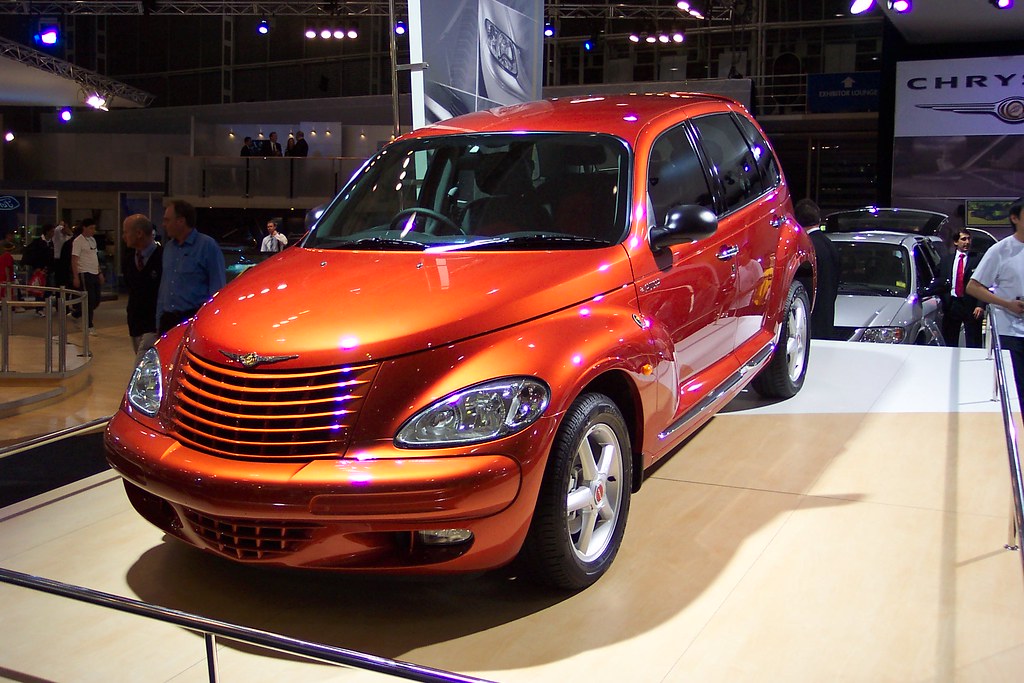
12. **Chrysler PT Cruiser** Ah, the Chrysler PT Cruiser. Where, indeed, do we even begin with this automotive enigma? Its retro-inspired styling was, to put it mildly, polarizing. People either loved it or hated it with a passion – or perhaps, as the saying goes, they loved to hate it. But for many owners, the styling was merely the tip of the iceberg, a quirky facade hiding a deeply problematic mechanical core that transformed affection into profound buyer’s remorse.
The list of engine issues for the PT Cruiser was, frankly, “galore.” Owners reported a terrifying array of problems, ranging from inconvenient “stalling to rough idling,” persistent “overheating,” and, most critically, “head gasket failure.” These aren’t just minor inconveniences; these are severe, often financially crippling maladies that indicate a fundamental lack of engineering integrity beneath the nostalgic sheet metal. An engine that constantly threatens to give up the ghost makes every drive an act of faith.
Yet, the troubles didn’t end with the engine. The PT Cruiser further frustrated its owners with pervasive “transmission and electrical problems, among other things.” This wasn’t a car with a single weak point; it was a vehicle riddled with systemic failures across multiple critical systems. Imagine the agony of an engine that overheats, a transmission that slips, and an electrical system that decides to go on strike, all in one package. It was a recipe for ceaseless trips to the repair shop.
The sentiment from many who owned a PT Cruiser is a resounding sigh of regret. It became painfully clear that the “looks aren’t the only things wrong with the vehicle,” underscoring how a car that tried to stand out visually instead became infamous for its mechanical unreliability. For those who hoped for a unique daily driver, the PT Cruiser delivered a masterclass in how an alluring concept can utterly fail in execution, leaving a lasting impression of regret and a cautionary tale about prioritizing style over substance.
Car Model Information: 2020 Audi Q5 45 Premium
Name: Chrysler PT Cruiser
Manufacturer: Chrysler
ModelCode: PT,PG
Production: 2000–2010
ModelYears: 2001–2010
Assembly: Toluca, Mexico State
Designer: Bryan Nesbitt
Class: Compact car
BodyStyle: convertible
Platform: Chrysler PT platform
Related: Dodge SRT4,Dodge Neon
Predecessor: Dodge Neon
Successor: Lancia Delta#Third generation
Layout: Front-engine, front-wheel-drive layout
Engine: ubl
Transmission: Ultradrive#40TE
Wheelbase: 103 in
Abbr: on
Length: 168.8 in
Width: 67.1 in
Height: 63 in
Weight: 3123 lb
Categories: 2010s cars, All articles with unsourced statements, Articles with short description, Articles with unsourced statements from March 2018, Cars discontinued in 2010
Summary: The Chrysler PT Cruiser is a compact car that was built by the American company Chrysler from 2001 until 2010. Introduced as a five-door hatchback wagon, a two-door convertible variant was also made from 2005 until 2008.
Originally planned as a Plymouth model, the PT Cruiser was ultimately marketed as a Chrysler when Plymouth was discontinued. Intended to invoke 1930s aesthetics, the exterior of the PT Cruiser was designed by Bryan Nesbitt. The model received an intermediate facelift for the 2006 model year. Interior packaging was noted for its high roof, high h-point seating, and flexible cargo and passenger configurations enabled by a multi-level rear cargo shelf and rear seats a user could fold, tumble, or remove.
The PT Cruiser was produced in Mexico and Austria at the Toluca Car Assembly and Eurostar Automobilwerk factories respectively. By the end of production in July 2010, worldwide production had reached 1.35 million.
In its nameplate, PT stands for “Personal Transport” or “Personal Transportation”. PT was the PT Cruiser’s product code for the Mexican-made units.
Get more information about: Chrysler PT Cruiser
Buying a high-performing used car >>>
Brand: Chrysler Model: PT Cruiser
Price: $20,955 Mileage: 51,510 mi.
Read more about: 12 Cars That Made Drivers Say ‘Nope, Not Again!’ – Your Ultimate Guide to Avoiding Instant Regret on Wheels
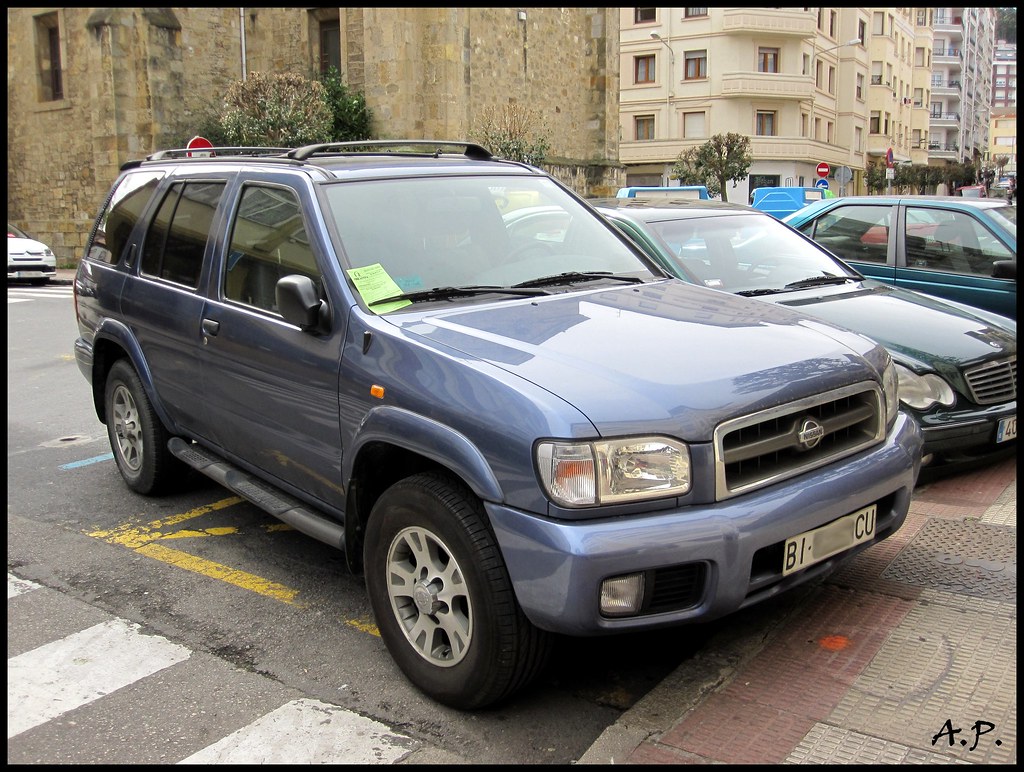
13. **Nissan Pathfinder** The Nissan Pathfinder, a popular SUV that has ferried countless families and adventurers over the years, unfortunately finds itself on this list not for lack of popularity, but for persistent problems that have left many owners absolutely regretting their buying decisions. It’s a vehicle that, despite its spaciousness and perceived utility, has proven to be a long-term source of frustration and unexpected expense for a significant number of its drivers.
The primary point of contention, echoing a familiar refrain from other Nissan models, is once again the continuously variable transmission (CVT). For Pathfinder owners, this particular gearbox proved to be a relentless headache, manifesting in deeply concerning symptoms. They reported “rough shifting” that felt anything but smooth, unsettling “shuddering” that made the vehicle feel unstable, and, perhaps most alarming, instances of “overheating” that could lead to catastrophic failure.
To the sheer chagrin and despair of some Nissan Pathfinder owners, these CVT issues frequently escalated to the point where they had “to replace the transmission” entirely. This is not a minor repair; it’s a colossal financial hit that completely undermines the value proposition of the vehicle. When a core component like the transmission fails, it signals a profound reliability flaw that no owner should have to endure, especially in a family-oriented SUV.
Compounding these transmission woes, the Pathfinder also grappled with various “engine issues and fuel system problems.” These additional ailments painted a picture of an SUV that, despite its rugged appearance, was fundamentally unreliable. For a vehicle often chosen for its ability to handle varied demands, persistent mechanical failures like these turned the Pathfinder into a source of immense stress, transforming a purchase meant for adventure and utility into a financial burden and a constant reminder of a regrettable choice.
Car Model Information: 2023 Nissan Pathfinder SL
Name: Nissan Pathfinder
Caption: 2022 Nissan Pathfinder Platinum 4WD (R53, US)
Manufacturer: Nissan
Production: 1985–present
ModelYears: unbulleted list
Layout: unbulleted list
Class: unbulleted list
Chassis: unbulleted list
Predecessor: unbulleted list
Successor: unbulleted list
Categories: 1990s cars, 2000s cars, 2010s cars, 2020s cars, All-wheel-drive vehicles
Summary: The Nissan Pathfinder is a range of sport utility vehicles manufactured by Nissan since 1985. Until the third-generation model, the Pathfinder is based on Nissan’s compact pickup truck platform which it shares with the Navara/Frontier.
The Pathfinder was marketed as the Nissan Terrano (Japanese: 日産・テラノ, Hepburn: Nissan Terano) outside North America. Beginning in 2004, the vehicles were marketed globally as the Pathfinder.
In 2012, the R52 series Pathfinder was released as a three-row crossover SUV based on the unibody Nissan D platform, moving away from the body-on-frame chassis format. The role of a mid-size body-on-frame SUV in Nissan’s global lineup was passed to the Terra/X-Terra, which was released in 2018 and based on the D23 series Navara.
Get more information about: Nissan Pathfinder
Buying a high-performing used car >>>
Brand: Nissan Model: Pathfinder
Price: $33,900 Mileage: 18,055 mi.
Read more about: 11 SUVs That Promise Adventure But Deliver Owners Immediate Regret
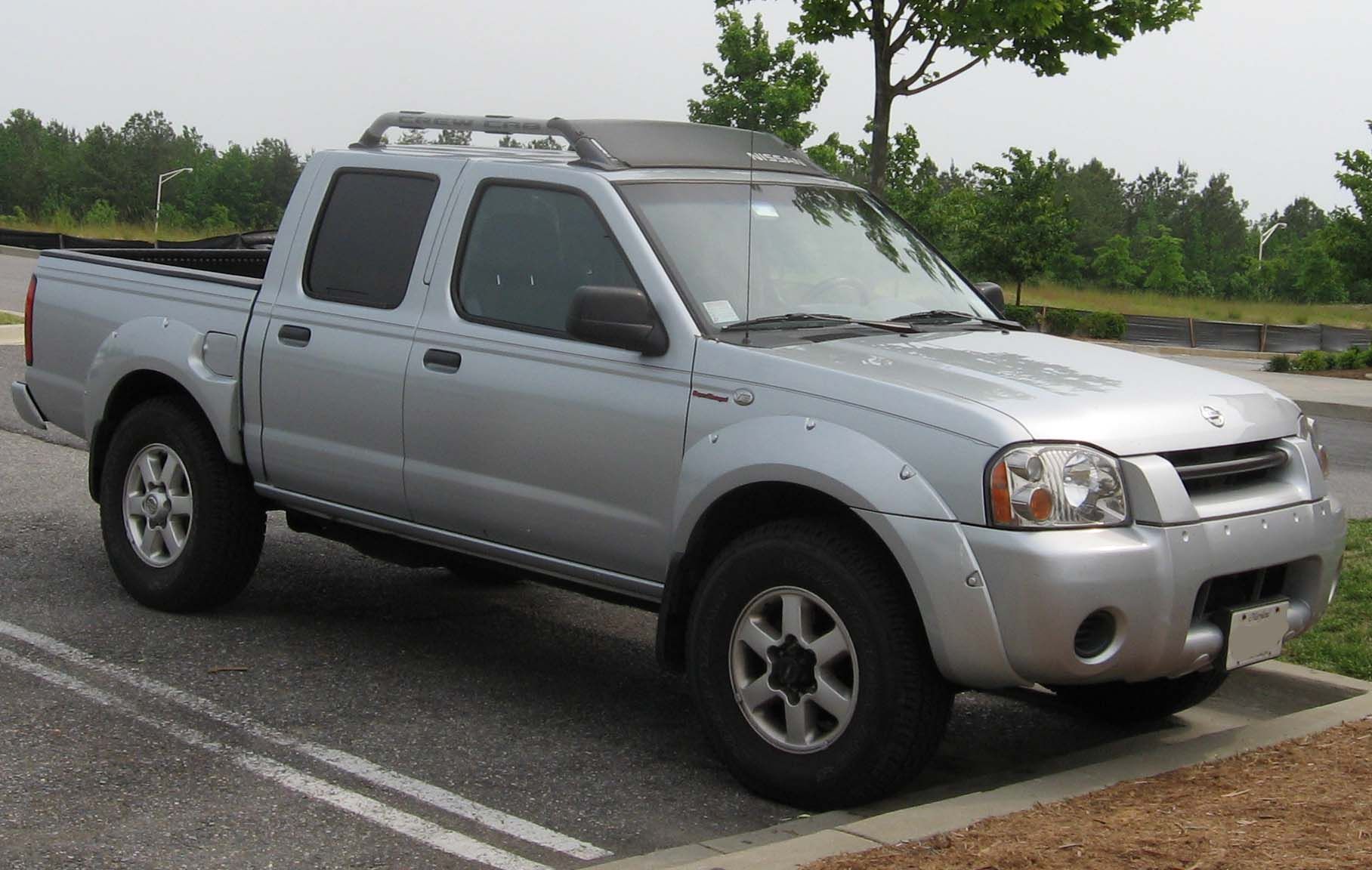
14. **Nissan Frontier** Even the rugged world of mid-size pickup trucks isn’t immune to the curse of buyer’s remorse, and the Nissan Frontier has earned its spot on this list with a range of problems that have left owners quite literally “shaking their heads and pounding the dashboard with their fists.” A truck is meant to be a reliable workhorse, a dependable companion for tough jobs or weekend adventures. For a specific era of the Frontier, it became anything but, transforming into a source of unending mechanical grief.
The 2005 to 2010 model years of the Frontier are particularly notorious for a deeply concerning and frankly catastrophic design flaw related to its transmission. In what can only be described as a significant engineering oversight, the radiator in these models had a nasty habit of leaking coolant directly into the transmissions. This isn’t just a slow drip; this is a recipe for disaster, essentially poisoning the very fluid vital for the transmission’s operation.
The insidious result of this coolant contamination was a cascade of transmission failures. Owners experienced terrifying symptoms such as “slipping gears,” profoundly “herky-jerky shifting” that made driving unpredictable, and ultimately, complete “transmission failure.” This wasn’t a matter of if, but when, these transmissions would give up the ghost, leaving owners stranded and facing exorbitant repair costs for a problem that stemmed from a fundamental design defect.
Adding to the Frontier’s woes, owners also battled with persistent “engine and timing chain issues.” So, for a truck that should have been a pillar of strength and dependability, these model years of the Nissan Frontier instead became a monument to mechanical frustration. For those who purchased one, the regret was not just real; it was a deeply ingrained, expensive, and constantly recurring nightmare, forever altering their perception of a brand that should have known better.
Car Model Information: 2014 Nissan Frontier S
Categories: All set index articles, Articles with short description, Nissan vehicles, Set index articles on cars, Short description is different from Wikidata
Summary: The Nissan Frontier is a nameplate used on three different pickup truck models by Nissan:
Nissan Frontier (international), an alternative nameplate for the NP300/Navara on some markets
Nissan Frontier (North America), a rebadged NP300/Navara from 1997 to 2021, then became a separate model since 2021
Nissan Frontier Pro, a rebadged Dongfeng Z9 PHEV that will be available from 2025.
Get more information about: Nissan Frontier
Buying a high-performing used car >>>
Brand: Nissan Model: Frontier
Price: $13,435 Mileage: 131,197 mi.
Read more about: 11 SUVs That Promise Adventure But Deliver Owners Immediate Regret
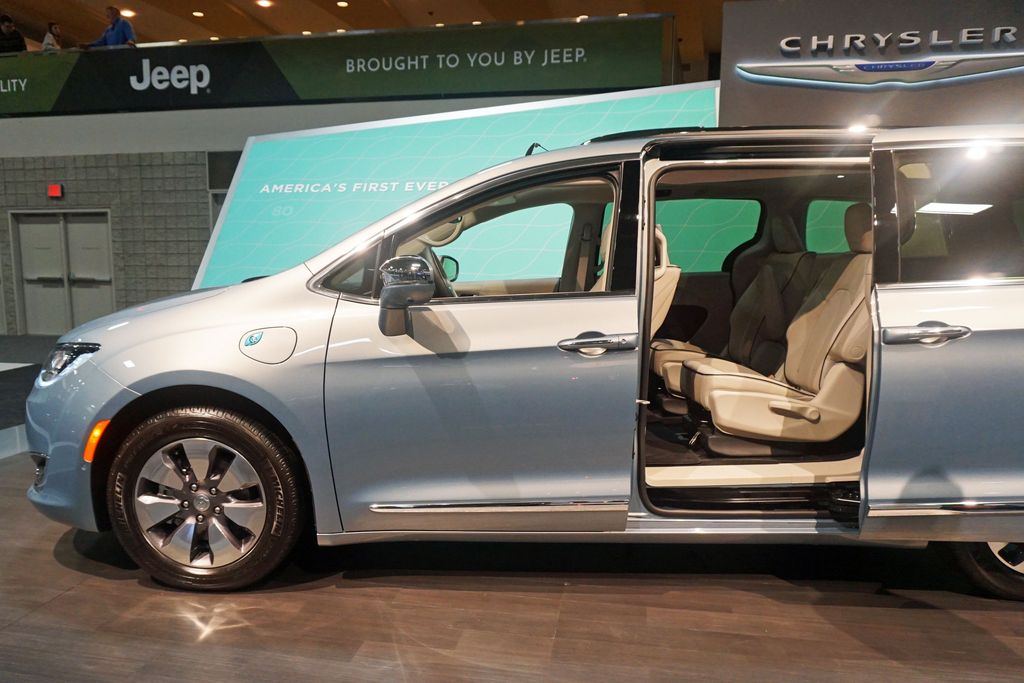
15. **Chrysler Pacifica Hybrid** The Chrysler Pacifica Hybrid, a popular minivan that aimed to blend family utility with modern fuel efficiency, presented itself as an innovative solution for environmentally conscious families. Its plug-in hybrid powertrain offered the promise of impressive fuel economy and the convenience of electric-only driving. However, for a significant number of owners, the reality proved far less rosy, leading them to question if the promised fuel efficiency was truly enough to offset a persistent barrage of “battery and electrical problems.”
The very core of its hybrid appeal, the powertrain, became its Achilles’ heel. Owners reported a litany of issues, including frustrating “battery drain,” an “inconsistent all-electric range” that undermined the promised efficiency, and, most critically, outright “battery failure.” When the hybrid system, the reason you bought the car, fails to perform as advertised or simply gives up, the entire value proposition collapses, transforming an innovative purchase into a profound disappointment.
Adding to the technological headaches, the Pacifica Hybrid also suffered from problems with its “electric continuous variable transmission.” This wasn’t just a traditional transmission issue; it was a specific problem within the complex hybrid system that further complicated an already troubled vehicle. For a minivan designed to simplify family life, these issues often did the exact opposite, adding layers of stress and uncertainty to everyday driving.
The sentiment among many owners was a resounding “No,” when asked if the fuel efficiency was enough to balance the myriad issues. The original context ominously notes, “And the list goes on,” implying an even deeper well of frustrations beyond those explicitly stated. It’s a stark reminder that sometimes, ambitious engineering, when not perfectly executed, can lead to more problems than it solves, leaving early adopters with buyer’s remorse and a costly lesson in the complexities of new automotive technologies.
Avoid These 15 Vehicles If You Don’t Want a Case of Buyer’s Remorse
So there you have it, folks, a deep dive into the 15 automotive culprits that have collectively authored a symphony of buyer’s remorse for their owners. This isn’t just a list; it’s a living document of caution, a compilation of experiences hard-won and dearly paid for by motorists who, given a do-over, would happily “unchoose” these machines from their past. From battery blazes and catastrophic engine failures to the never-ending headaches of problematic CVTs and electrical gremlins, these vehicles represent some of the most frustrating chapters in modern car ownership.
Car Model Information: 2023 Chrysler Pacifica Touring L
Categories: All set index articles, Articles with short description, Chrysler vehicles, Set index articles on cars, Short description is different from Wikidata
Summary: Chrysler Pacifica is a nameplate used by Chrysler for a variety of vehicles.
The name was first used on a luxury minivan concept vehicle in 1999, and later a crossover concept in 2002.
From 2004 to 2008, it was used on a mid-size crossover, and since the 2017 model year, it has been used as the Town & Country minivan’s replacement.
Vehicles using the nameplate are:
Chrysler Pacifica concept (1999), concept minivan
Chrysler Pacifica concept (2002), concept crossover
Chrysler Pacifica (crossover) (2004–2008), production version of the 2002 concept
Chrysler Pacifica (minivan) (2017–present), Chrysler Town & Country replacement
Get more information about: Chrysler Pacifica
Buying a high-performing used car >>>
Brand: Chrysler Model: Pacifica
Price: $21,482 Mileage: 67,623 mi.
Read more about: 12 Cars That Made Drivers Say ‘Nope, Not Again!’ – Your Ultimate Guide to Avoiding Instant Regret on Wheels
Remember, sometimes the smartest move you can make in life is to learn from the mistakes of others. Especially when those mistakes cost tens of thousands of dollars and years of financial commitment. In an era where new car prices are soaring and being underwater on a loan is an all-too-common reality, making an informed decision has never been more critical. The cars listed here, despite any fleeting appeal or initial promise, have proven to be persistent sources of anguish. Unless you’re eager to roll the dice on your financial well-being and your daily sanity, consider these 15 vehicles as the ultimate ‘skip’ list for your next car purchase. Research, patience, and a healthy dose of skepticism are your best friends in the automotive jungle. Trust us, your future self (and your wallet) will thank you for it.


